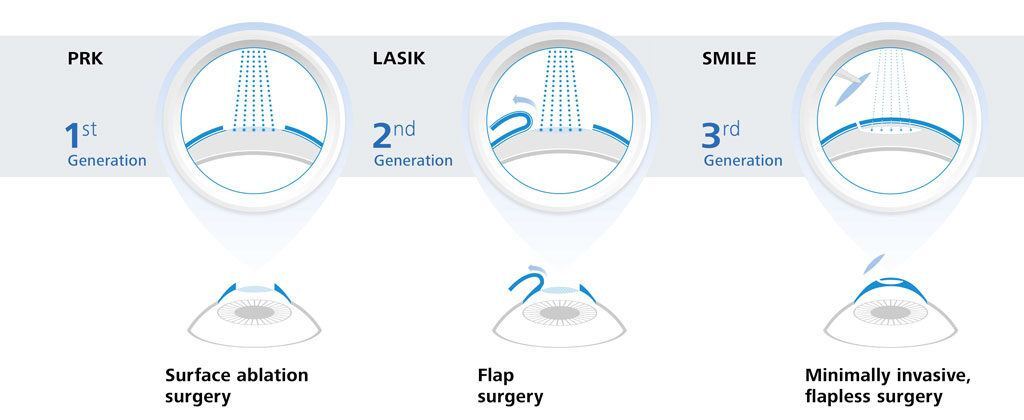Astigmatism is a common eye condition that causes blurred vision. It develops when the eye is not perfectly round, and is instead shaped more like a football or an egg. This abnormal shape causes light rays to focus on two points on the retina, rather than one, resulting in distorted vision. If blurred vision is getting in the way of daily activities, contact Dr. Hayek for a consultation.
There are two structures that are primarily responsible for your eye’s ability to focus. The first is the cornea, which is the front surface of your eyeball, and the second is the lens, which is inside the eye, right behind the iris and pupil. Ideally, your cornea is perfectly round. However, if you have an astigmatism, your cornea is not symmetrical or perfectly round, which results in blurry vision.
Astigmatism can affect both adults and children. Individuals at a heightened risk of developing the condition include those with:
To confirm your diagnosis and begin planning your astigmatism treatment, Dr. Hayek and his team will perform a series of tests. First, you can expect a standard vision examination, during which you will read the letters on an eye chart. You will then look through a phoropter (a large machine with lenses of varying strengths) so Dr. Hayek can determine your prescription.
Depending on the degree of your astigmatism, you will benefit from either corrective lenses or surgical intervention. If you have been diagnosed with a very slight form of the condition, you may not require any treatment at all.
Most mild astigmatism cases can be adequately corrected with the right glasses or contacts. With glasses, the lens compensates for your irregularly shaped cornea that’s causing blurred vision. However, if you have a severe astigmatism, they may make the floors or walls appear slanted.If you’re diagnosed with a mild version of this condition and want to wear contacts, Dr. Hayek may prescribe a special toric lens. These lenses are designed to bend light in a way that counteracts an irregularly shaped eye. If your condition is more severe, gas-permeable rigid contact lenses may be more suitable. During your appointment, Dr. Hayek and his team will review all of these options with you and help you determine which one is in your best interest.

Laser eye surgery, or laser vision correction, involves using lasers to reshape the front surface (cornea) of your eyes so that you can focus better. It can correct short-sightedness, long-sightedness and astigmatism.
Laser eye surgery is suitable for most people over 18. Ideally your eye prescription will have stayed more or less the same for about 2 years. Lens surgery may be more suitable if you have a high spectacle prescription or later in life.
There are 3 main types of laser eye surgery: LASIK, SMILE and surface laser treatments.
